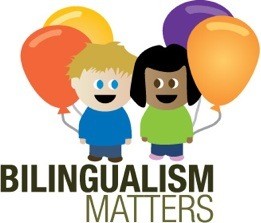When children first learn a language, a noticeable change takes place in the salience of various word-word relations during middle childhood. A child has difficulty attributing the relationship between planes and buses to their shared taxonomy but is quick to point out the thematic relationship between an iron and a shirt. Children might unable to be able to recognize that both plane and bus are vehicles but realize that they both exhaust fumes. Most children already acknowledge both thematic and taxonomic relationships by the time they are 8 years old. (Hashimoto et al., 2007). Children who are bilingual must store and retrieve a lot of words whether it is simultaneously or sequentially because vocabularies are distributed across two linguistic systems.
In a study done by Sheng, McGregor, and Marian (2006) with Mandarin-English bilingual children and monolingual children, they found that bilingual children responded more frequently taxonomically than the monolingual children when the first associations and associations to verbs were compared. This finding is interesting because bilingual children have a significantly smaller English receptive vocabulary than monolinguals but they have subtle advantage.
Volterra and Taeschner (2008) analyzed how children become bilingual from a three stage gradual learning process. The first stage is that the child has one lexical system which includes words from both of the languages. The second stage is that the child distinguishes the two different lexicons but can apply the same syntactic rules to both languages. The third stage is that the child has two linguistic codes, differentiated both in syntax and lexicon, but each language is exclusively associated with the person using that language. Once they complete all three stages, and are able to categorize people in terms of their language decreases and become bilingual.
Additionally, a study by Sheng, Bedore, and Peña (2008) compared word association between Spanish-English bilingual children in their first and second languages. There was also a subtle Spanish advantage over English speakers in generating taxonomic associations to adjectives and verbs. Sheng, Bedore, and Peña (2008) believe that because the Spanish language uses many verbs such as (-oso, -ado, -ivo) to mark the adjective class and use or verbs, that the utterances may have led to an earlier appreciation of taxonomic relations for Spanish adjectives and verbs.
Pfister (2009) interested in education systems questions whether or not teaching children a second language as well as English is a good idea or bad. Pfister accomplished this study by conducting an online survey for a month which asked bilingual individuals their opinions and reflections on their own bilingual acquisition and their children’s. She found that bilingual children will follow a series of stages in their semantic and syntactic acquisition in which there is a bilingual disadvantage, followed by a bilingual advantage and a continuous stage of neutrality between bilingual children and their monolingual peers. Children and Adults who are bilingual have a unique configuration of languages in comparison to monolinguals.
In another study by Gauthier (2012) and (Houwer, 1999, p.2), concluded that exposing infants to two different languages at birth will not cause them to acquire language differently than their monolingual peers. Overall, monolingual and bilingual children acquire language in the same way.
